There is no reason not to have TP2 for your safety
Tire Air Pressure Information
The under inflation should be monitored

Tire Air Pressure Information
TP2 is an indispensable safety device similar to Airbag/ABS.
- 1. Tire Air Pressure
- Because tires may naturally lose air over time, it is very important to check your tire pressure at least once a month. The right amount of air is the pressure specified by the vehicle manufacturer.
The correct air pressure is shown on the tire information placard attached to the vehicle door edge, door post, glove box or fuel door and owner's manual. The tire air pressure is measured by PSI(Pounds per square inch) in USA.
Other pressure measurement unit are the Kgt/cm, BAR or the KPA, The standard in Europe is the bar whereas the standard in the United States is the PSI. Japan mostly uses the Kgf/cm or the KPA. Generally, a 4-wheel passenger vehicle / SUV uses a 28-33 PSI tire air pressure, and automotive companies have a recommended air pressure unit for each vehicle type. 1 supplier of original equipment manufacturer since 2012.
- 2. Changes to Tire Air Pressure while driving
- When a vehicle is in motion, the temperature inside of the tire rises due to friction with the road surface and tire air pressure increases by 10%-20%. Consequently, the proper tire air pressure must be checked before driving so as not to be affected by the friction heat. ( The status before driving is called "COLD PRESSURE", and refers to the state when driving has not occurred within the past 3 hours or driving has occurred but over a distance within 1.6km)
- Caution - Never bleed or reduce air pressure when tires and not. It is normal for pressure to build up as result of driving.
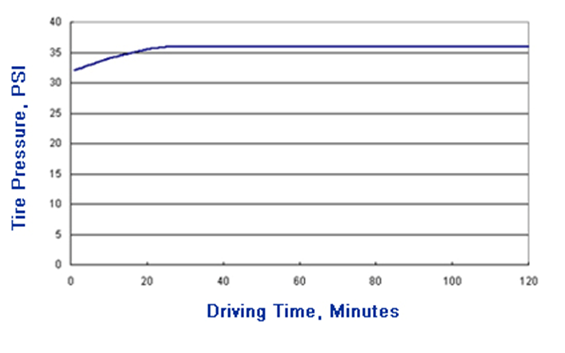
- 3. Checking Tire Tread
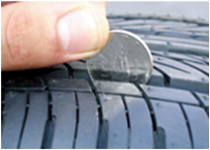
- Tires have built-in treadwear indicators that let you know when it is time to replace your tires. These indicators are raised (at) sections paced intermittently in the bottom of the tread grooves, when they appeal even the outside of the tread; it is time to replace your tires. You can also test your tread with a Lincoln penny. Simply turn the penny so Lincoln's head is pointing down and insert it into the tread. If the read doesn't cover Lincoln's head, it is time to replace your tires.
- Confirming Wear Limit :
- There is a wear limit indication point at 1.6mm high inside of the tread groove.
If this point can be seen, this is indication that the tire must be changed.
Also, tires which have been irregular wears must be replaced irrelevant to the depth of the tread groove.
- 4. Driving with low pressure tires is dangerous.
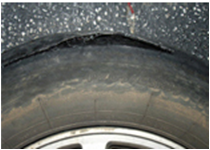
- Tire with low air pressure without any external damage are still susceptible to flats. The most common problem is the occurrence of major accidences due to damage of low pressure tires while driving long distances. These accidents are because of the generation of heat and the standing wave phenomenon, which changes the shape of the tire and causes damage. When a tire has been damaged, a situation in which the tread portion and the carcass level become separated while driving may arise. In accordance to 2002 Korean freeway statistics, among 489 accidents on freeways which occurred due to vehicle defects, 305 cases were caused by tire damage, which accounts for 60% of accidents.
- Dangers from High speed driving
- Also known as a stationary wave is a wave that remains in a constant position. This phenomenon can occur because the medium is moving in the opposite direction to the wave, or it can arise in a stationary medium as a result of interference between two waves travelling in opposite directions. There is no net propagation of energy, so the receiver actually doesn't see any signal.
- 5. Driving with low pressure tires is dangerous.
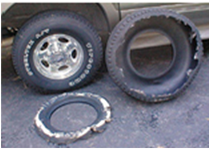
- If the air pressure is low, the tire becomes changed when accelerating decelerating and when cornering, dropping the driving characteristics of the vehicle due to a lack of strength on the tires to stay even. If high speed driving continues in a state where the tires have low pressure, this creates the standing wave, causing the tires to flat and transforming wave energy becomes into heat energy. In such a case, the heat from the tire rubber becomes rapidly increased, which decreases the tire strength. If severe, the tire may rip and cause the vehicle in rollover.
- 6. Can low pressure tires be recognized by visual inspection?
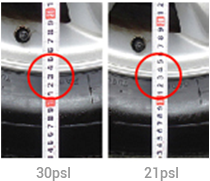
- A tire which has fallen below a dangerous point of 30% loss of air cannot be recognized by the human eye or by kicking the tire.





